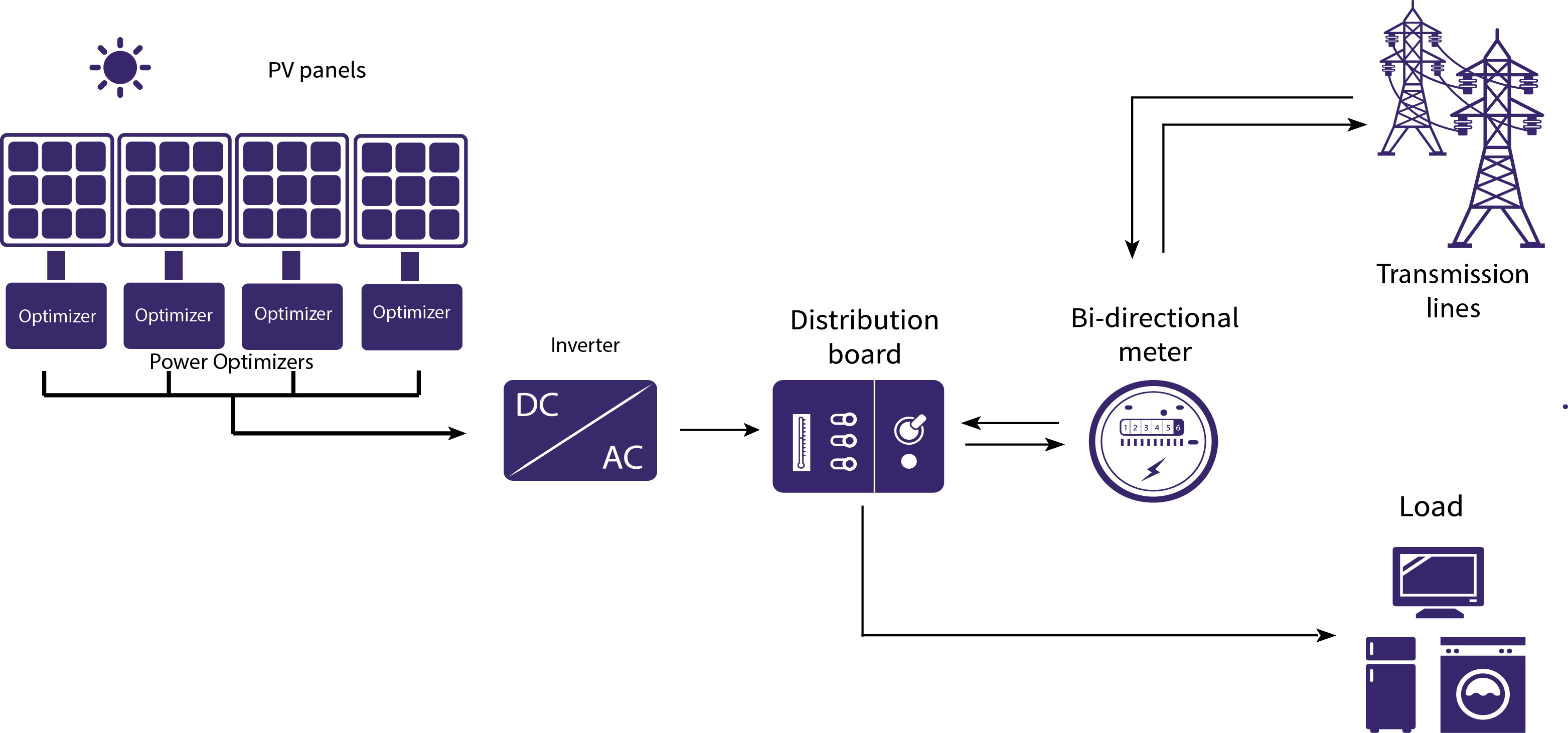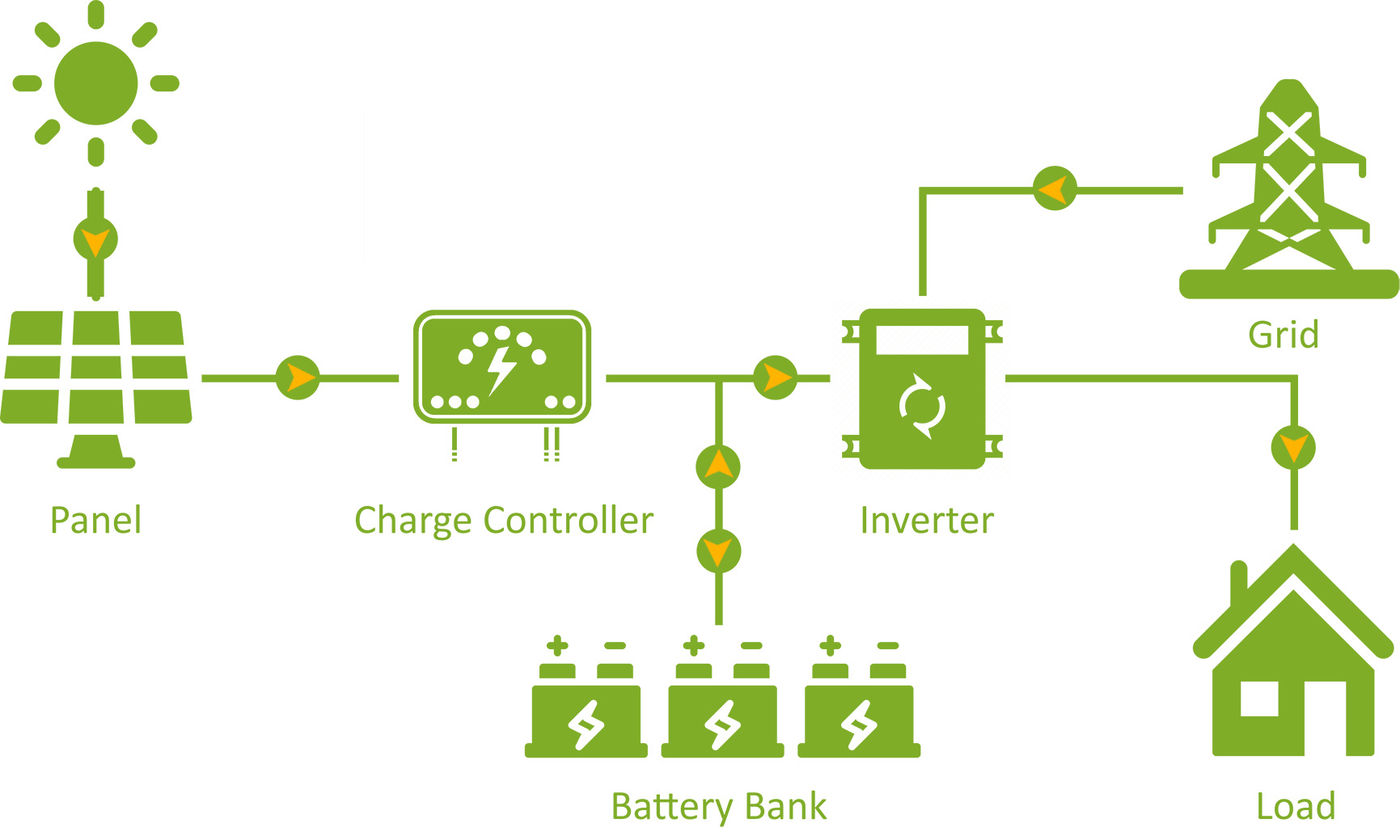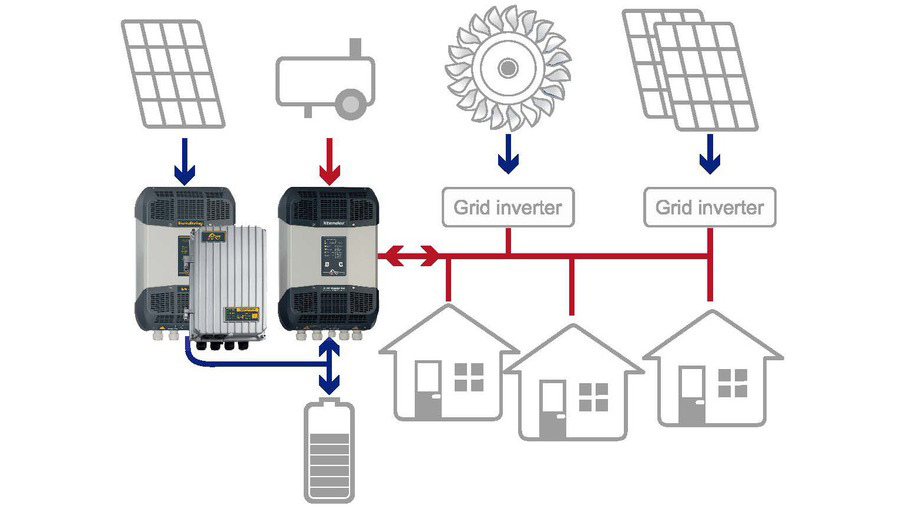Solar Inverter : On Grid/ Off- Grid / Hybrid

On-grid Solar systems
On-grid solar power systems generate power using a solar power system and are directly connected to the utility power grid. These systems send excess power generated by the solar power system to the utility grid and consumers get compensated for the extra power fed back. These systems work in collaboration with the power grid. In the case when there is not enough sunlight to meet your business’ needs, the system runs on the power supplied by the grid. These systems are best suitable when your power consumption is high and you wish to reduce the electricity bill. On grid system can be installed with or without Net Metering Being connected to the main grid, these system do not work during power outage.
Applications:
Businesses can rely on on-grid solar systems to meet their daily requirements, as well as earn income from the excess power generated. On bright sunny days, buildings can generate enough solar energy to power appliances, lights, water heating systems, etc
Advantages:
On-grid solar systems are very cost-effective and easy to install.
Businesses can recover the cost of their investment by offsetting electricity bills in just 3-4 years. If a private, commercial or industrial building sets up a solar PV rooftop system it will be eligible to avail an ‘Accelerated Depreciation Benefit’ which is currently 80% in a year. At this rate, a project can completely depreciate the whole value of the project in approximately 4 years

Off-grid Solar systems
Off-grid systems work independently of the grid but have batteries which can store the solar power generated by the system. The system usually consists of solar panels, battery, charge controller, grid box, inverter, mounting structure and balance of systems. The solar panels generated energy from the sunlight is stored into the battery during the day and the excess is used by the load at the same time. The stored energy in the battery will be discharged to fulfil night power requirement. .
These systems are self-sustaining and can provide power for critical loads in areas where a power grid is not available. However, these systems require specialized equipment to function and can be costly to install. These are ideal for businesses which can sustain for a short period of time with insufficient or no electricity.
Applications:
Electricity supply in rural and remote areas : Off-grid solar systems can facilitate independent, long-term and sustainable electricity generation in rural and remote areas.
Power back up in areas with frequent electricity cuts : A number of places in India face frequent power cuts due to power transmission malfunctions, which can hamper operations of companies and public institutions. Off-grid solar systems can provide an economical and viable long-term backup solution to overcome the problems occurring during frequent power cuts.
Advantages:
These self-sustainable systems can work independently and do not rely on the grid
They generate enough power that can be stored and used at night or when the power grid is down.
These are ideal for remote areas where there is no power access from the grid.
Grid failures and shutdowns will not affect your power supply.

Hybrid solar systems
Generate power in the same way as a common grid-tie solar system but use special hybrid inverters and batteries to store energy for later use. This ability to store energy enables most hybrid systems to also operate as a backup power supply during a blackout, similar to a UPS system.
Traditionally the term hybrid referred to two generation sources such as wind and solar but in the solar world the term 'hybrid' refers to a combination of solar energy grid import/export and energy storage.
Applications:
This is perfect for home owners although for the majority of businesses which operate during the daylight hours.
Hybrid solar systems enable you to store solar energy and use it when you're home during the evening when the cost of electricity is typically at the peak rate.
The ability to store and use your solar energy when desired is referred to as self-use or self-consumption. It works in the same way as an off-grid power system but the battery capacity required is far less, usually just enough to cover peak consumption (8 hours or less) as opposed to 3-5 days with a typical off-grid system.
Hybrid System Advantages
Allows you to store excess solar or low cost (off-peak) electricity.
Allows use of stored solar energy during peak evening times (known as self-use or load-shifting)
Most hybrid inverters have backup power capability.
Reduces power consumption from the grid (reduced demand)
Enables advanced energy management (ie. peak shaving)
Hybrid System Disadvantages
Higher cost. Mainly due to the high cost of batteries.
Longer payback time - Higher return on investment
More complex installation requires more room and higher install cost.
Battery life of 7-15 years.
Backup power may limit how many appliances you can run at the same time (depending on the type of hybrid inverter and its capability)
